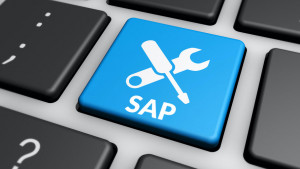- Zach Frye
- Reading Time: 5 minutes

With the 2027 maintenance deadline to move off ECC quickly approaching, customers must consider eating increasing maintenance costs, renegotiating their deals or moving to 3rd party support. Here, I will outline why it is important to begin crafting your 3rd party support strategy now, how SAP will try to keep you on their maintenance and outline the benefits and risks of each option to be considered.
Why Do I Need to Start 3rd Party Support Planning Now?
Opportunity to Cut Costs via Maintenance
With SAP extending maintenance for ECC until 2027, customers are being faced with critical decisions regarding their go-forward maintenance strategies. While SAP customers have more time to purchase S/4HANA On-Prem licenses, they are being faced with significant increases in maintenance cost pressures compared to what they’ve become accustomed to over the past decade.
As a result, many of SAP’s customers are contemplating whether they truly require SAP to maintain the status quo until they migrate to RISE, or whether they had other viable maintenance options, including 3rd party support.
Over the past few years, as SAP has gone all-in towards RISE, many of their customers have shifted from contemplating 3rd party support to planning and executing that support due to increasing financial and operations pressures being put on On-Premise customers. This exercise started by assessing what, if any cost-cutting levers they had, along with the associated risks and opportunities.
SAP Maintenance Increase Objectives
Much to their customers’ displeasure, SAP has dipped into unfamiliar territory with their recent maintenance fee increase announcements. At the onset of 2023, SAP raised maintenance fees by 3.3% for customers with existing support agreements. Earlier this year, they announced another round of more punitive increases, this time 5%, effective January 1st, 2024. As SAP often does, they blamed global inflationary pressures for the impending maintenance increase.
It’s important to be aware of and understand SAP’s motives with these announcements beyond alleviating inflation pressures. SAP’s been very public regarding their top business objectives, which are centered around SAP RISE, and their desire to migrate their 25,000 On-Premise customers to RISE is the driving force behind these recent announcements. SAPs attempting to take control over not only their customers’ maintenance strategy but their technology roadmap.
While many of their customers may be forced to adjust their migration plans due to these announcements, it’s important to know there’s other options on the table, including negotiating directly with SAP or leveraging 3rd Party Support.
How Can SAP Keep You on SAP Maintenance?
Before going directly to 3rd party support, your organization should conduct a thorough baseline assessment of your existing maintenance framework, shelfware, and current SAP agreements. As a result of this exercise, many customers have determined they lack the unilateral ability to reduce their maintenance obligation as SAP’s offering is all or nothing.
In order for customers to reduce maintenance costs, it requires a concession from SAP, which is not easily achieved. While SAP will likely push-back, they have previously offered mechanisms at the account-level for relief before customers call the likes of Rimini or Spinnaker. So, what real options does SAP have to keep their customers on their maintenance?
Maintenance Financing and Deferrals
The first possibility is to offer financing options to customers, including the ability to create payment plans or defer payment until a mutually agreed-upon date. This option provides companies with increased cash flow flexibility but does not offer the full extent of financial relief that companies are targeting.
Maintenance Suspension and Terminations
In order to maintain its renewable maintenance base, SAP has the option to suspend maintenance for certain entitlements or even terminate shelfware providing temporary and long-term cash flow relief for customers who stay on with them.
PSLE at Lower Thresholds
For those customers who do not require Enterprise Support, SAP offers Product Support for Large Enterprises (PSLE) at a lower spend threshold. Historically, customers were required to spend a certain amount of money with SAP to benefit from PSLE’s more cost advantageous maintenance, but SAP’s shown willingness to allow customers access who may not perfectly fit the specific criteria for this offering in efforts to keep them aboard.
Multi-Year Commitments
While SAP can certainly offer any of the above levers to customers in exchange for relief, this relief will be accompanied by a request for a multi-year commitment to SAP. This way, while SAP provides relief, it is also able to relieve its shareholders by booking out revenue for maintenance in the outer years.
Why Consider 3rd Party Support?
Given SAP’s recent tactics with maintenance fee increases, SAP customers who are hesitant to move to RISE should consider 3rd party support. As businesses are faced with their own inflationary pressures and budgetary risks, all options must be on the table regarding your SAP Maintenance strategy, including 3rd party support that may provide additional predictability, flexibility and other cost or operational efficiencies.
SAP 3rd Party Support Cuts Maintenance with Predictability
The first and most attractive attribute of 3rd party support is the ability to immediately cut maintenance costs and maintain support for the SAP environment. Beyond the initial relief, 3rd party support customers also stand to benefit from longer-term contracts, providing additional predictability which can, if done right, align nicely with the time when many customers anticipate making the migration to the Ccoud.
SAP 3rd Party Support Offers Capable Providers for Many Customers
While 3rd party support providers may not be a perfect fit for every SAP customer (e.g., those with custom-developed SAP solutions), those suppliers like Rimini or Spinnaker may be a good fit for many. Often a surprise, the 3rd party support providers have strong penetration in the market with thousands of clients, and they support many large companies in the $1B – $10B range.
Maintenance Strategy Options
1. Renegotiate with SAP
Your first option, and perhaps the most attractive, is to renegotiate your maintenance directly with SAP. While not eager, SAP should be willing to invest the time and resources to have discussions with their customers about current maintenance positions, future requirements, and options SAP can position to offset concerns.
This approach requires the least amount of time and resources by which to directly impact your SAP maintenance costs. The downside to this approach is that SAP will be less flexible and likely more expensive than the other options involving 3rd Party support.
2. Negotiate With a Sole 3rd Party Support Provider
Before getting into direct negotiations with a 3rd party support provider, it’s important to establish a discovery call to obtain information around their offering, differentiating capabilities, savings opportunities and to ensure they understand your environment and objectives. If there’s a sense of collective alignment and direction coming out of the discovery call, that should open the opportunity to move forward with a proposal. Since this is a new space for many companies, I would recommend obtaining an assessment of your proposal’s competitiveness prior to signing on the dotted line.
3. RFP 3rd Party Support
Your final option is to conduct an RFP that creates a competitive sourcing event. Given the likelihood that SAP will become aware of the RFP, it may be worth prepositioning the event to SAP, allowing them to be aware of the process you are undertaking with the potential they position a more compelling offering.
The RFP option presents the most cost savings opportunity for your organization. However, it requires the most time, coordination and resources to effectively manage.
There’s never been a more critical time for SAP customers to evaluate and renegotiate their SAP maintenance or consider moving to 3rd party support. As we always recommend, customers should conduct a baseline assessment of their current relationship with SAP prior to engaging SAP or 3rd party support providers. Arming yourself with a strong assessment of your existing relationship can provide you with the intelligence you need to renegotiate with SAP or move to 3rd party support from a position of strength.
